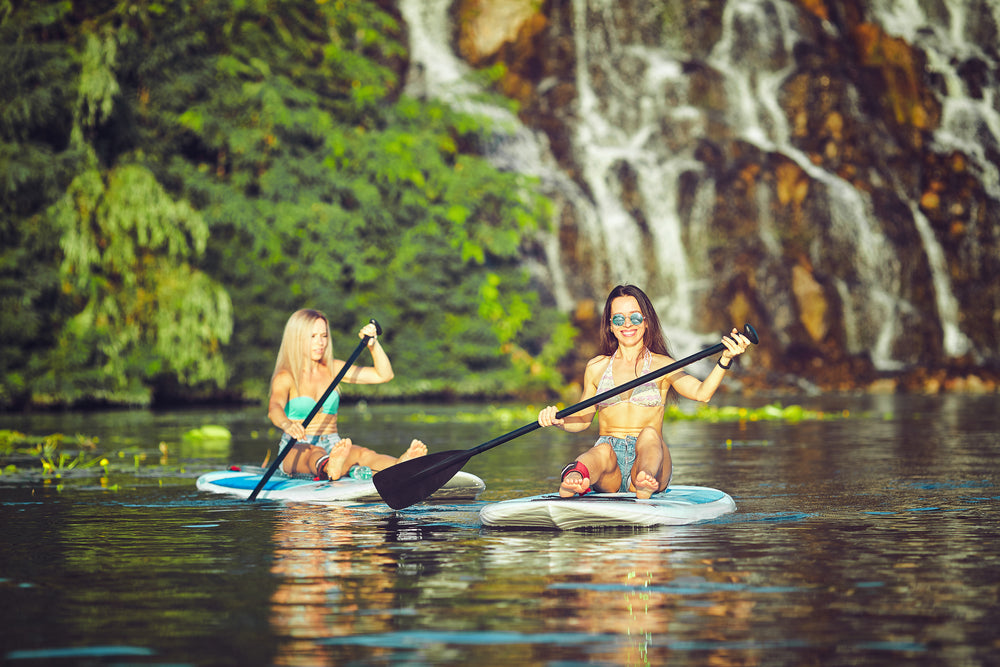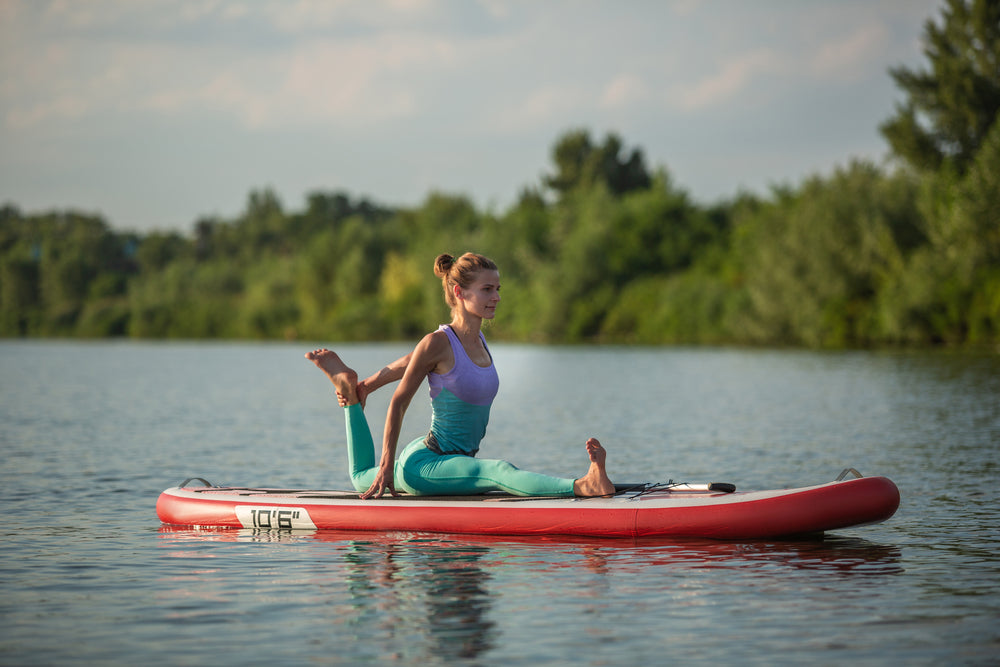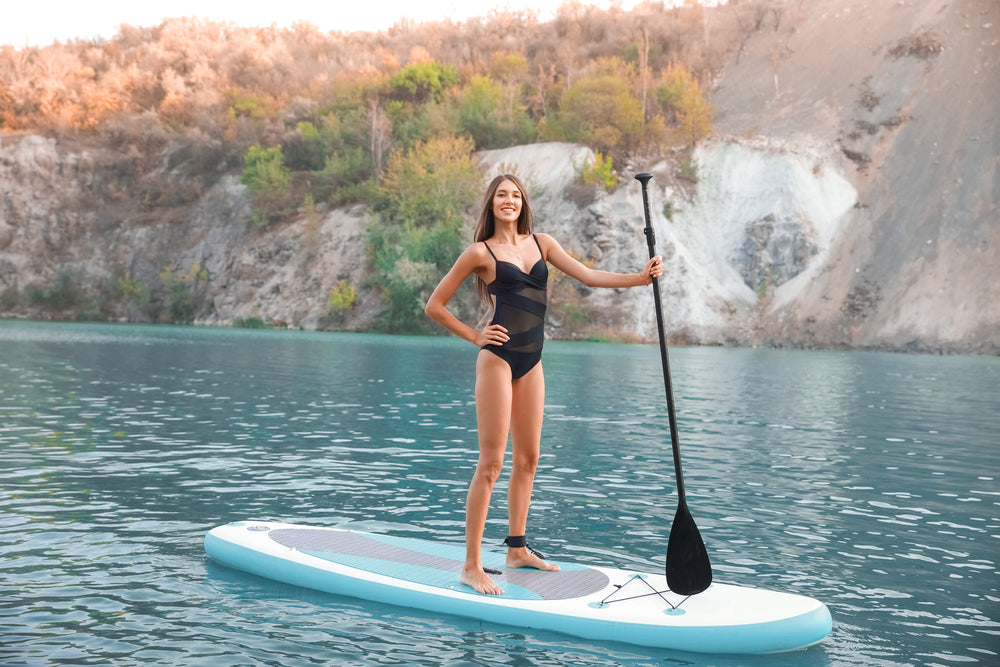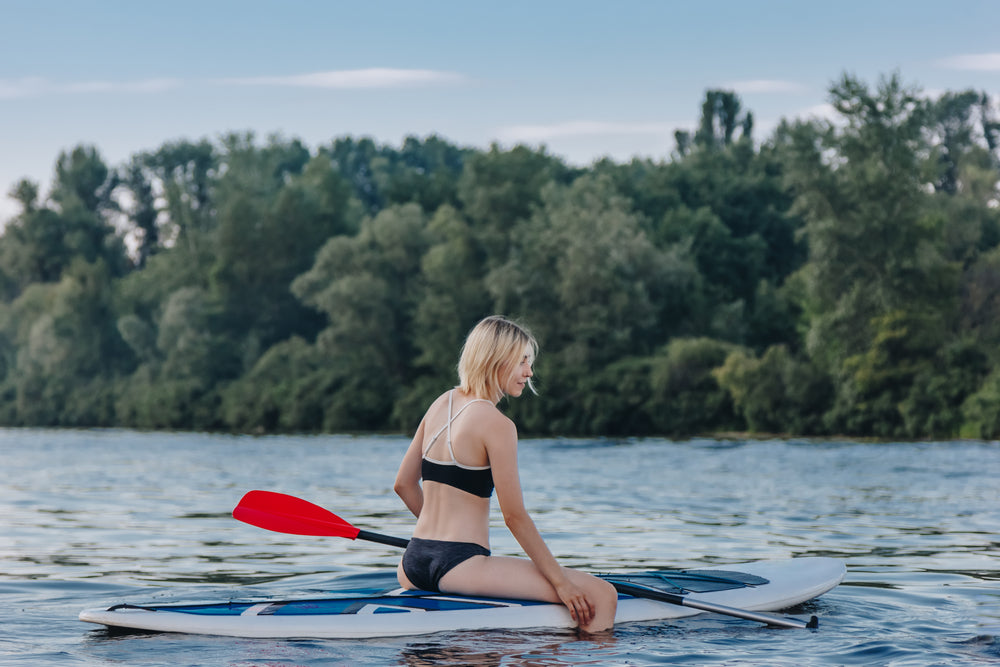How To Paddle Board On A River: A Guide For Beginners

Paddle boarding on a river is an exciting blend of calm and chaos. Amid the stillness of nature, it puts your balance and agility to the test as you tackle changing water flows, uneven surfaces and occasional river wildlife.
Catering to water enthusiasts and adventurous souls, Dax Board Company brings the spirit of Lake Tahoe, CA amidst the thrill of river paddle boarding. All-around paddle boards, meticulously crafted by the Dax Board team, serve as the ultimate companion for beginners aiming for paddle board river voyages. Our board offers stability, maneuverability, and durability, allowing learners to navigate their way through unpredictable river conditions comfortably. In line with this, Dax Board Company also provides a vast selection of paddle board accessories to further amplify your paddle boarding experience.
Choose the Right Equipment
The first step in preparing for a river paddle boarding adventure is selecting the right board and paddle. For rivers, a board that is wide and stable yet maneuverable is ideal. Inflatable paddle boards are often preferred for their durability and resistance to damage from rocks or other obstacles. Equally important is choosing a paddle that's the right length, enabling efficient strokes without straining your back.
Safety gear is a non-negotiable part of your equipment. A well-fitting personal floatation device (PFD) should be worn at all times. Helmets are recommended, especially in rivers with rapid currents or low-hanging branches. A leash that connects you to your board can also be lifesaving, ensuring you don't get separated from your board if you fall off.
Understand River Currents
Understanding how river currents work is crucial for safe paddle boarding. Rivers flow with varying speeds, and their currents can change direction suddenly. Eddies, or areas where the water is calmer, can be found near the shore or behind large obstacles in the water. Learning to spot and use eddies to rest and plan your next move is a valuable skill.
Beginners should start on gentler sections of the river, where the current is steady and predictable, avoiding areas with rapids or heavy white water. Always check the flow rate and water conditions before setting out, and never paddle alone. Paddling with someone experienced or taking a class can provide valuable insights into how to read and navigate river currents safely.
Learn Proper Foot Position and Stance
Your stance on the paddle board greatly affects your balance and mobility. The correct foot position is with the feet parallel, about hip-width apart, centered between the edges of the board. This stance gives you a stable base to balance on as the water moves beneath you.
As you gain confidence, you'll learn to adjust your stance for more stability or maneuverability. Bending your knees slightly can help absorb the movement of the water, especially in choppy conditions. Remember, your legs are your shock absorbers on the water; keeping them flexible is key to maintaining your balance.
Master Turning and Steering Techniques
Turning and steering are essential skills for navigating a river's changing currents and avoiding obstacles. The forward sweep stroke and the reverse sweep stroke are two fundamental techniques to direct your board. The forward sweep stroke, performed by reaching the paddle forward and sweeping it in a wide arc toward the tail of the board, turns the board away from the paddle side.
For tighter turns or quick directional changes, the reverse sweep stroke comes in handy. This involves reaching the paddle towards the back of the board and pulling it forward in a wide arc. Practice these turning techniques in calm water before applying them on the river.
Equip Yourself for the Next Adventure
Venturing into paddle boarding? Connect with us today! Delight in the wild waters with Dax Board Company. Our passion for paddle boarding equals our commitment to delivering top-notch paddle board equipment.


